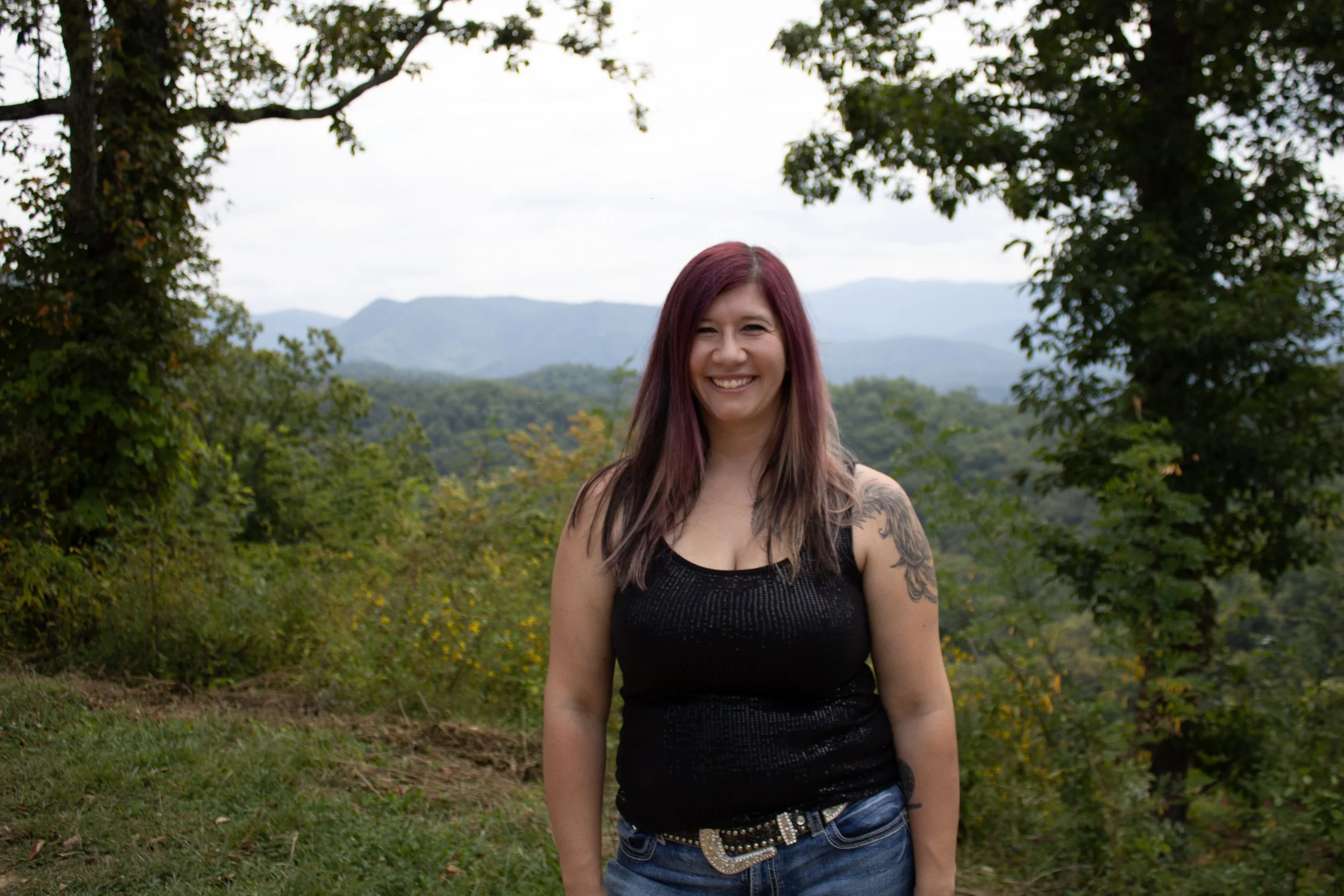Note: Episode 30 Show Notes are available at the end of this entry.
What if everything you've been trying to control, manage, and perfect about yourself is actually an invitation?
What if the rage you're working so hard to calm is medicine? What if the grief you're trying to transcend is a portal? What if the sensations you've learned to override are actually your body speaking its most sacred wisdom?
In our culture, we're taught to treat our bodies as projects. Something to optimize, discipline, improve. We learn early that feeling too much makes us weak, dramatic, uncontrolled. We're rewarded for keeping it together, for pushing through, for being in control.
But what if the real power lies not in being in control, but in being with?
The Descent
There's a word I recently learned from Raphaëlle Normandin that keeps echoing in me: descent.
Not the kind of descent that means falling or failing. The sacred kind. The kind that cracks you open and unravels who you thought you had to be so you can become who you actually are.
Raphaëlle describes her own descent beginning the moment her first son was born—time stopping, everything softening, being cracked wide open not just physically but spiritually. For the first time, she slowed down enough to listen to her body, her baby, her instincts.
Many of us have experienced these threshold moments. Birth, loss, illness, heartbreak—times when our carefully constructed armor simply couldn't hold anymore. Times when we had no choice but to feel.
And in those moments, we discover something revolutionary: our bodies are not problems to fix. They're portals.
From Control to Presence
We spend so much energy trying to be in control. Control our emotions, control our responses, control how others perceive us, control the outcomes.
But Raphaëlle invites us into something different: the power of being with.
Being with our rage instead of trying to transcend it. Being with our grief instead of rushing to heal it. Being with the trembling in our bodies instead of calming it down.
She offers a practice so simple it almost sounds too easy:
Lay on the floor. Breathe. Let your body tremble. Don't try to calm it. Ask: "What wants to be felt right now?" And then... feel.
This is sacred work.
Not because it's elaborate or requires special tools or training. But because it requires us to release the one thing our culture has trained us to grip most tightly: control.
Everything You're Feeling Is Your Medicine
In this week's episode of Moon & Fire, Raphaëlle shares something that stopped me in my tracks: "Even our rage can be devotional."
What if the feelings we've been taught to suppress—rage, grief, raw desire—are not evidence that something is wrong with us, but invitations to come home to ourselves?
What if your body isn't betraying you when it trembles, when it resists, when it refuses to perform? What if it's actually guiding you toward what you most need to feel, to know, to become?
Raphaëlle describes the body as a "sacred calendar"—with its own rhythms, its own seasons, its own wisdom about when to expand and when to contract, when to feel and when to rest.
When we honor this, we stop betraying ourselves. We stop pushing. And we begin to belong to ourselves in a way the world can't touch.
The Invitation
If you're exhausted from trying to fix yourself, from managing and controlling and perfecting, this conversation is for you.
If you're ready to discover your body as a portal rather than a project, this is your invitation.
Listen to my full conversation with Raphaëlle Normandin on Moon & Fire: "Sacred Descent: The Power of Being With, Not In Control." (Check it out below 👇)
Because maybe—just maybe—the way forward isn't through more control. It's through the sacred descent of finally letting yourself feel.
What would shift if you stopped trying to fix yourself and started listening instead? I'd love to hear your thoughts—share them with me via email: emily@wholeandwild.com
Listen to Episode 30:
EPISODE 30 SHOW NOTES
Episode #30: "Sacred Descent: The Power of Being With, Not In Control with Raphaëlle Normandin”
Brief Description:
In this powerful conversation, Emily sits down with Raphaëlle Normandin to explore what it means to initiate back into our bodies—not through performance or perfection, but through sensation, slowness, and shadow. Raphaëlle shares her journey of being cracked wide open at her son's birth, describing it as a sacred descent and unraveling from who she had been into who she was becoming.
You'll discover why everything we're feeling is not too much but our medicine, how to shift from being in control to being with what arises, and why even our rage can be devotional. Raphaëlle guides us through her simple floor practice—laying down, breathing, letting the body tremble, and asking "what wants to be felt right now?"—revealing why allowing the trembling rather than calming it is sacred work. She opens up about releasing her armor and discovering that true strength doesn't hustle but trusts.
This conversation offers permission for women ready to feel what they've been taught to suppress—rage, grief, pleasure—and meet themselves there with reverence. Perfect for anyone who's tired of treating their body as a project and ready to discover it as the portal it truly is.
Key Quotes:
Invitations from this episode:
TO ACCESS EPISODE RESOURCE GUIDES 👇
Sign up for Moon & Fire Email Notes
Join our sacred circle and receive weekly emails with links to the latest episodes, companion blog posts, and exclusive access to episode resource guides. These practical tools will support your journey of remembering your sacred cycles, reclaiming your radiant fire, and unleashing your intuitive magic.













